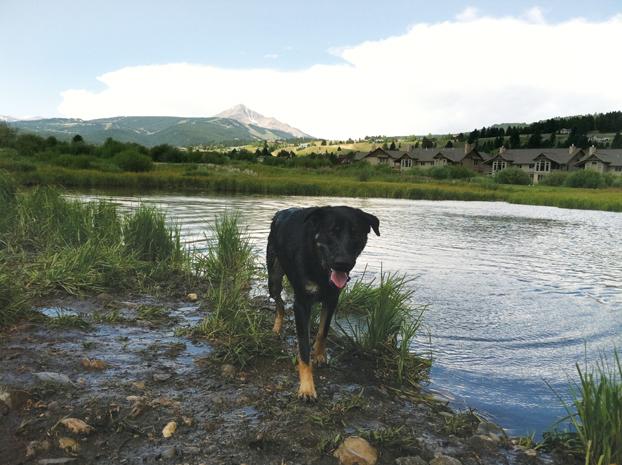Safety in Stale Water
Summertime is play-in-the-water time, and our dogs like to splash around in lakes and ponds just as we do. But the aquatic world around us isn’t always as benign as it looks. As you enjoy the warm weather this summer, keep in mind that there are dangers lurking beneath the water. And as a responsible animal owner, you need to be aware and take the proper precautions—for your own pet’s safety and that of others.
Giardiasis
This disease is caused by a parasitic protozoa and the most common intestinal parasite of humans, but pets can contract it as well. It causes its unpleasant effects on the body by paving the lining of the small intestine and blocking normal absorption of nutrients, resulting in diarrhea and consequently weight loss, lethargy, and anorexia. To help prevent infections, be sure to pick up feces and do not allow your animals to defecate in or near the water.
Leptospirosis
Surviving especially well in warm, stagnant water, this can cause flu-like symptoms in people, and infected pets pose a risk for transmission to unsuspecting owners. Most infections occur in the summer and early fall when our animals are exposed to contaminated water, bitten by an infected animal, or ingest infected animal tissue. Severe cases can be fatal with symptoms ranging from a fever, joint or muscle pain, and decreased appetite, to weakness, vomiting, diarrhea, and jaundice. Antibiotics are used to treat it, but once kidney or liver failure are present, the odds of recovery decline and aggressive treatment requiring hospitalization is vital.
Cyanobacteria
When you see green scum in and around the shoreline of stagnant ponds this summer, it may not necessarily be harmless algae. Cyanobacteria has been found in wild bodies of water, as well as urban lakes and even backyard ponds. These harmful algal blooms often occur during and after successive hot days in standing water, and the bacterial toxins released can be potentially lethal to your pets as well as to wildlife and livestock. Symptoms usually appear within 15 to 20 minutes after ingestion, and include pale gums, weakness, staggering, difficulty breathing, and convulsions. During and following heat waves, do your best to keep your animals (and humans) away from lakes or stagnant ponds, particularly if you observe stale, green water.
Prevention
When your dog is desperate to cool off this summer, reduce their risks by choosing a river over a pond, and never allow your dog to drink from or swim in stagnant, heavily contaminated water. Make sure to bathe your furry friends after swimming—allowing them to groom their own wet coat can be hazardous. And if you’ve got a backyard pond, aerate that thing: stagnant water is the ideal breeding ground for mosquitoes. Help fight against mosquito-borne diseases such as heartworms, Western Equine Encephalitis, and West Nile.
Sarah Lavelle is the owner of The Ark Veterinary Practice and has been serving the Gallatin Valley’s animals and owners as a mixed animal practitioner for over ten years.













